Abstract
Subterranean clover plants possessing two equally infectible and robust lateral root systems (“split roots”) were used in conjunction with several specific mutant strains (derived from Rhizobium trifolii ANU843) to investigate a systemic plant response induced by infective Rhizobium strains. This plant response controls and inhibits subsequent nodulation on the plant. When strain ANU843 was inoculated onto both root systems simultaneously or 24, 48, 72, or 96 h apart, an inhibitory response occurred which retarded nodulation on the root exposed to the delayed inoculum but only when the delay period between inocula was greater than 24 h. Equal numbers of nodules were generated on both roots when ANU843 was inoculated simultaneously or 24 h apart. The ability to infect subterranean clover plants was required to initiate the plant inhibitory response since preexposure of one root system to non-nodulating strains did not retard the ability of the wild-type strain to nodulate the opposing root system (even when the delay period was 96 h). Moreover, the use of specific Tn5-induced mutants subtly impaired in their ability to nodulate demonstrated that the plant could effectively and rapidly discriminate between infections initiated by either the parent or the mutant strains. When inoculated alone onto clover plants, these mutant strains were able to infect the most susceptible plant cells at the time of inoculation and induce nitrogen-fixing nodules. However, the separate but simultaneous inoculation on opposing root systems of the parent and the mutant strains resulted in the almost complete inhibition of the nodulation ability of the mutant strains. We concluded that the mutants were affected in their competitive ability, and this finding was reflected by poor nodule occupancy when the mutants were coinoculated with the parent strain onto a single root system. Thus the split-root system may form the basis of a simple screening method for the ranking of competitiveness of various rhizobia on small seeded legumes.
Full text
PDF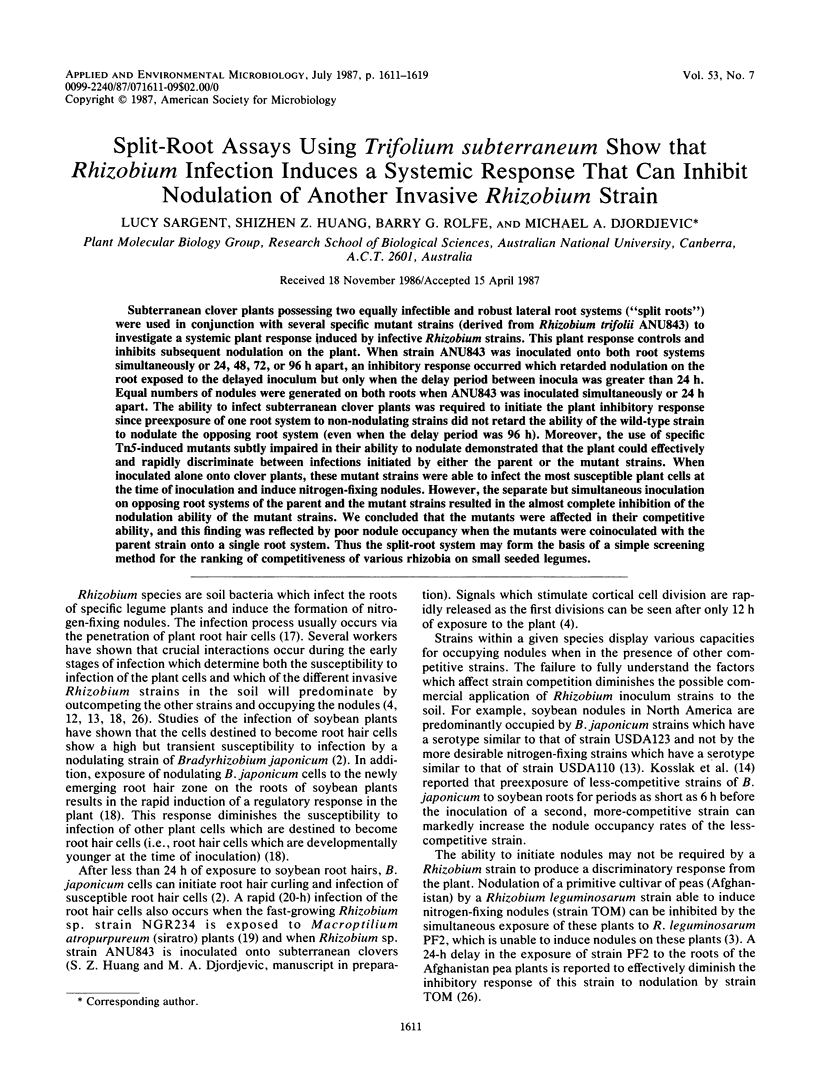
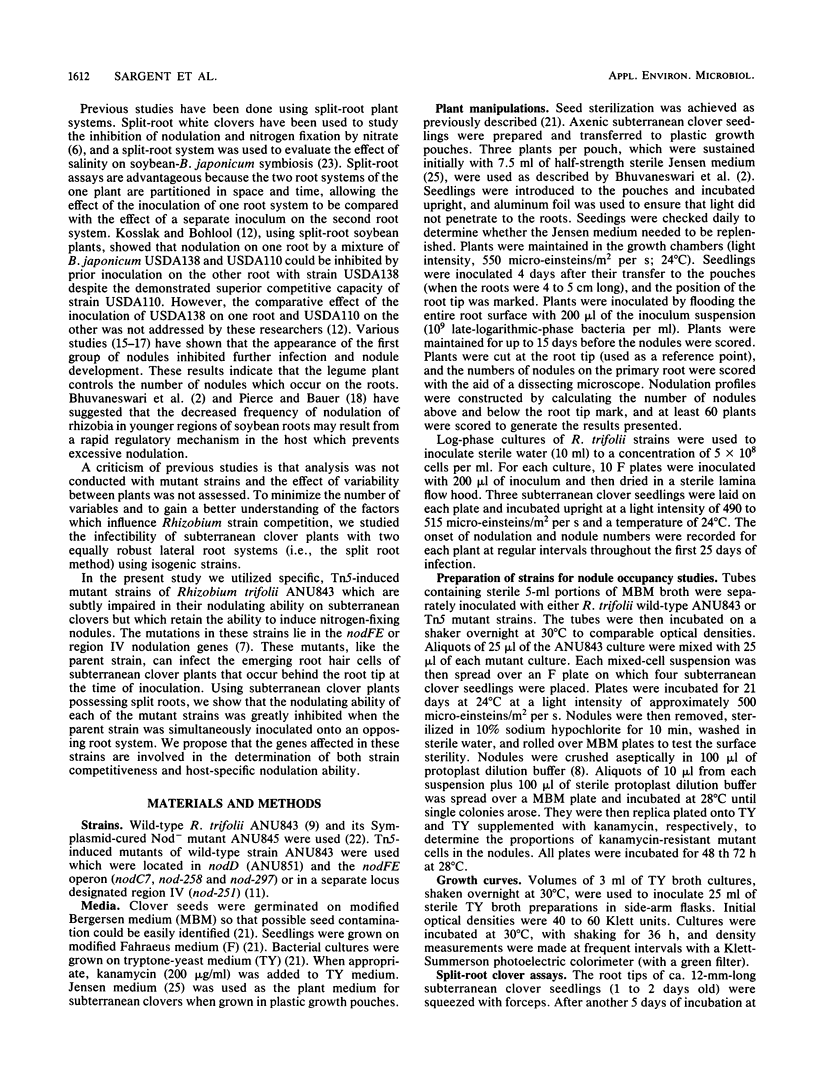

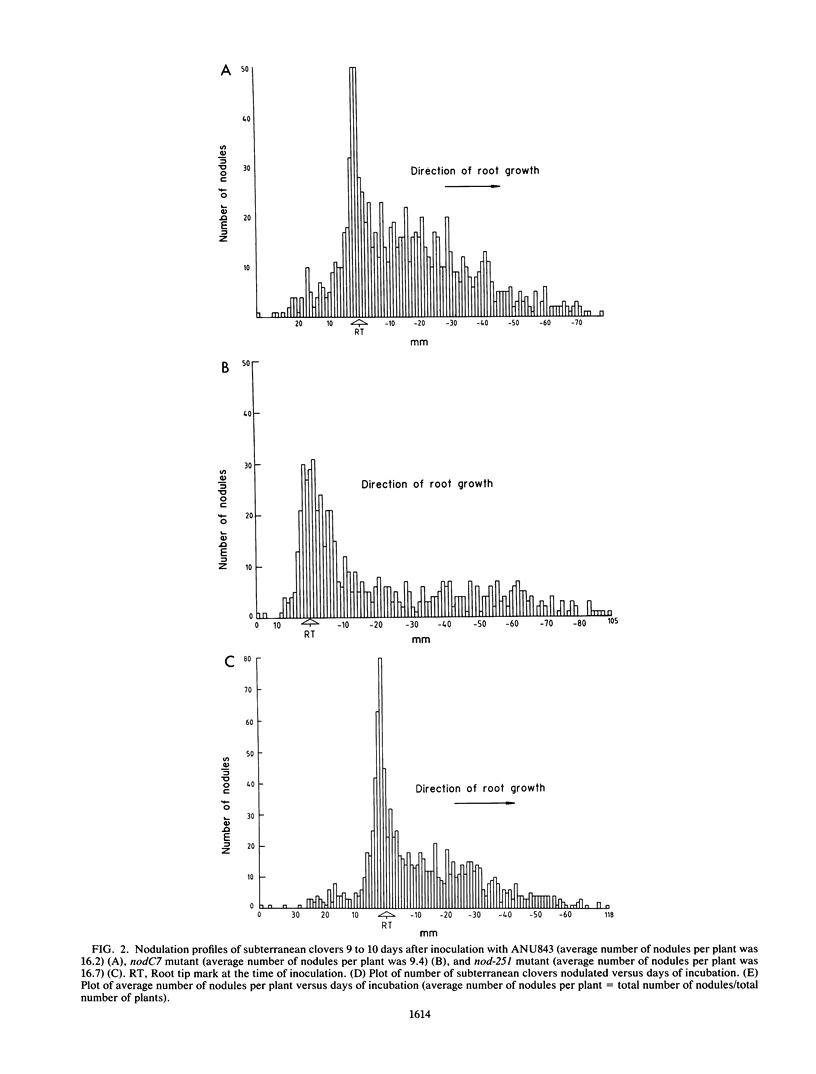
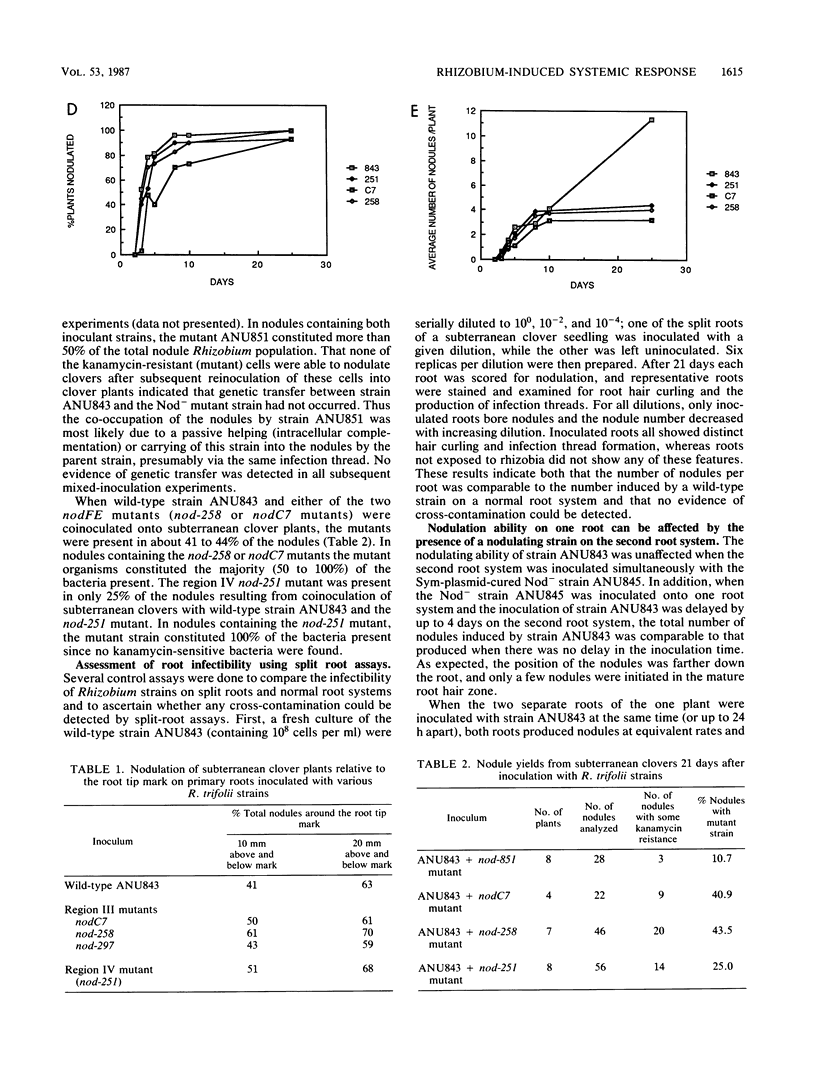
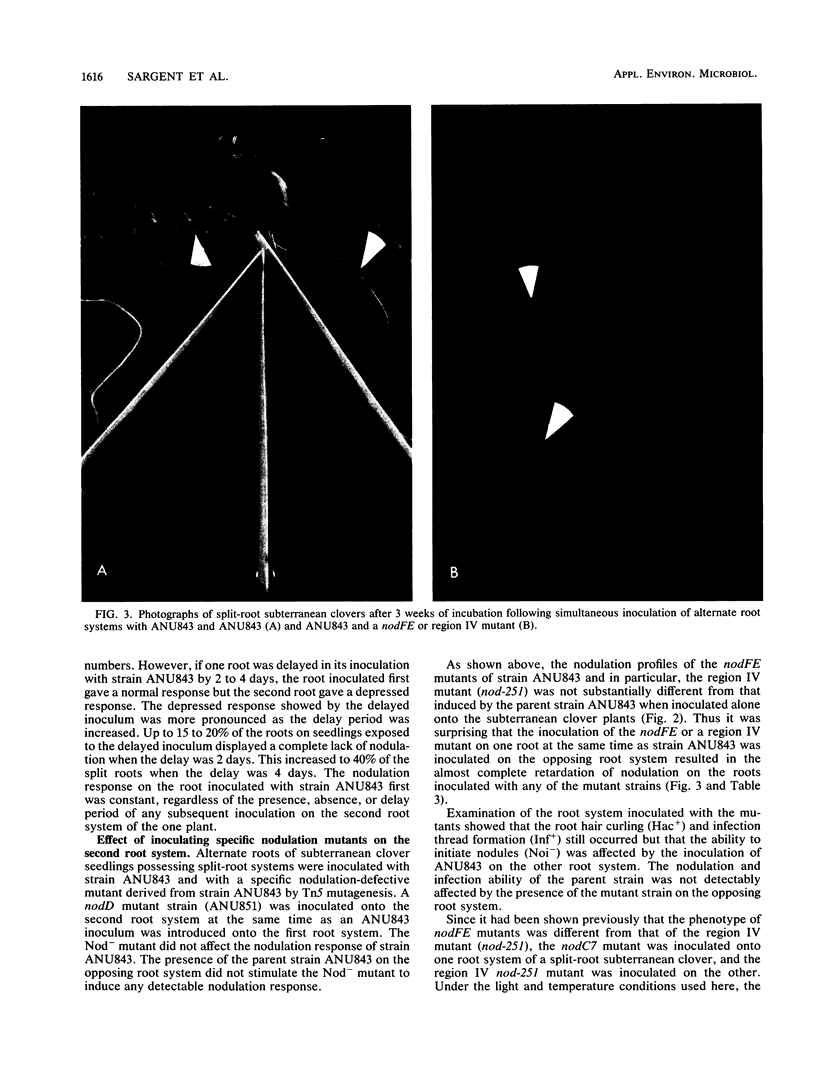
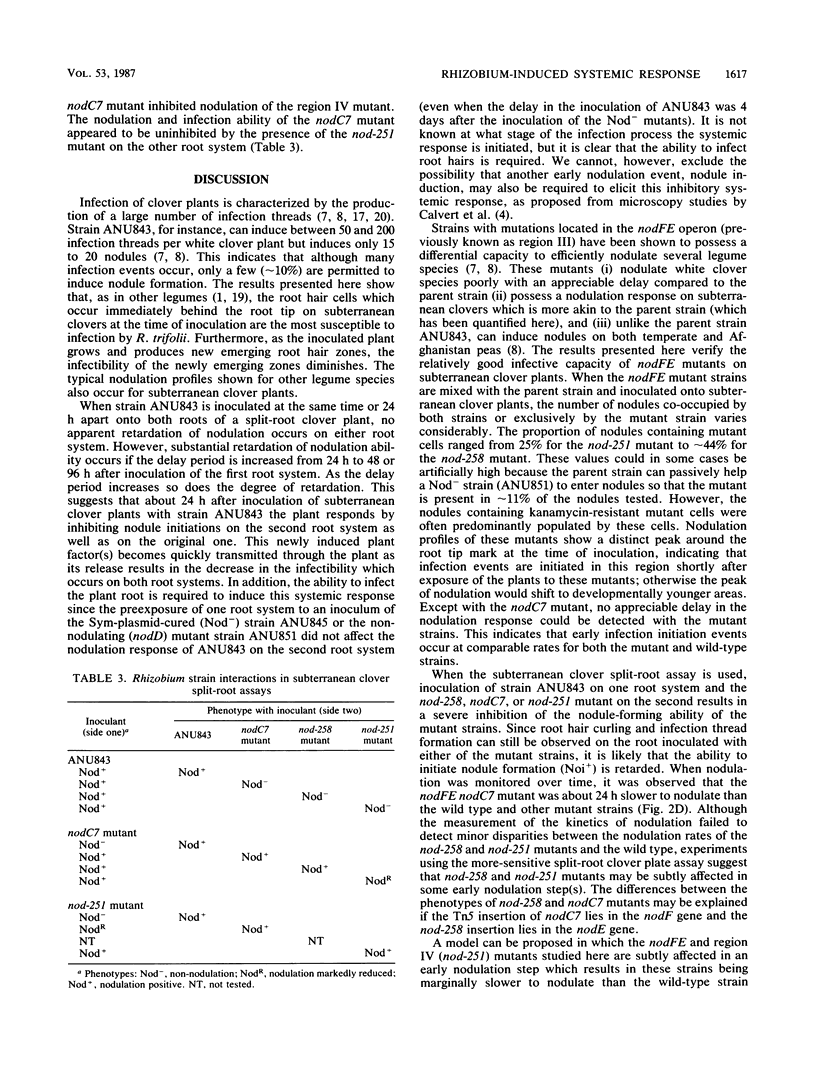
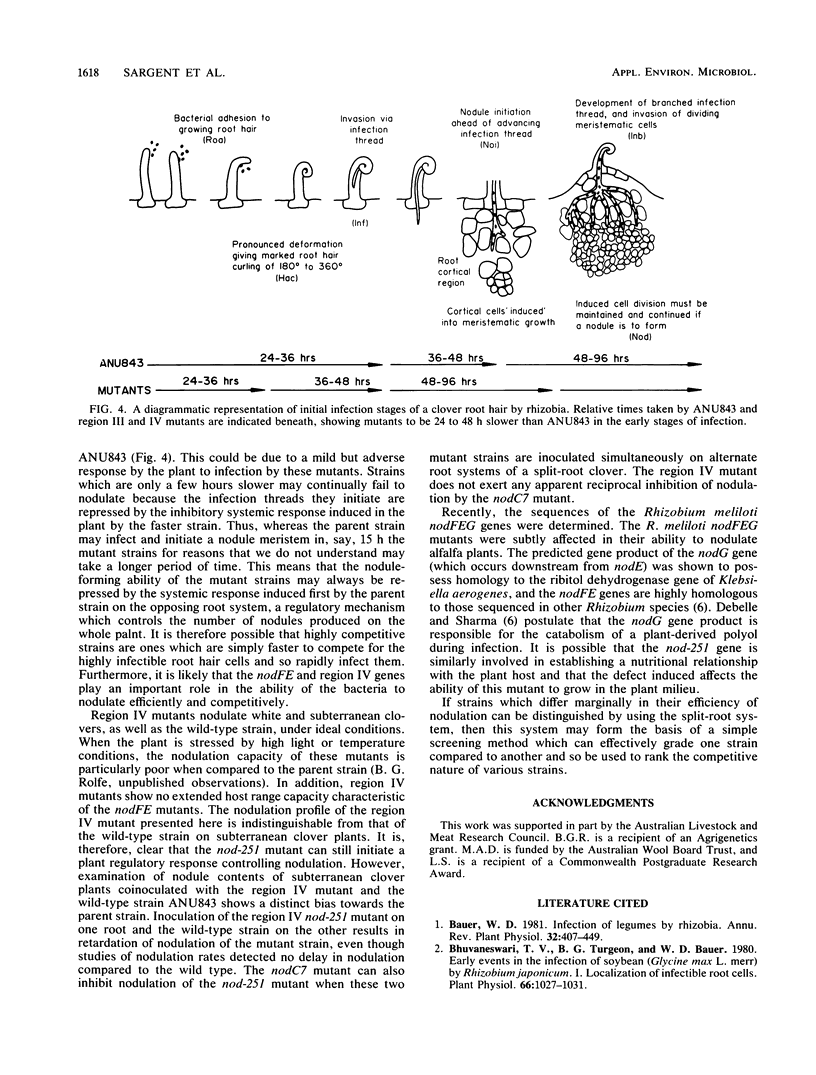
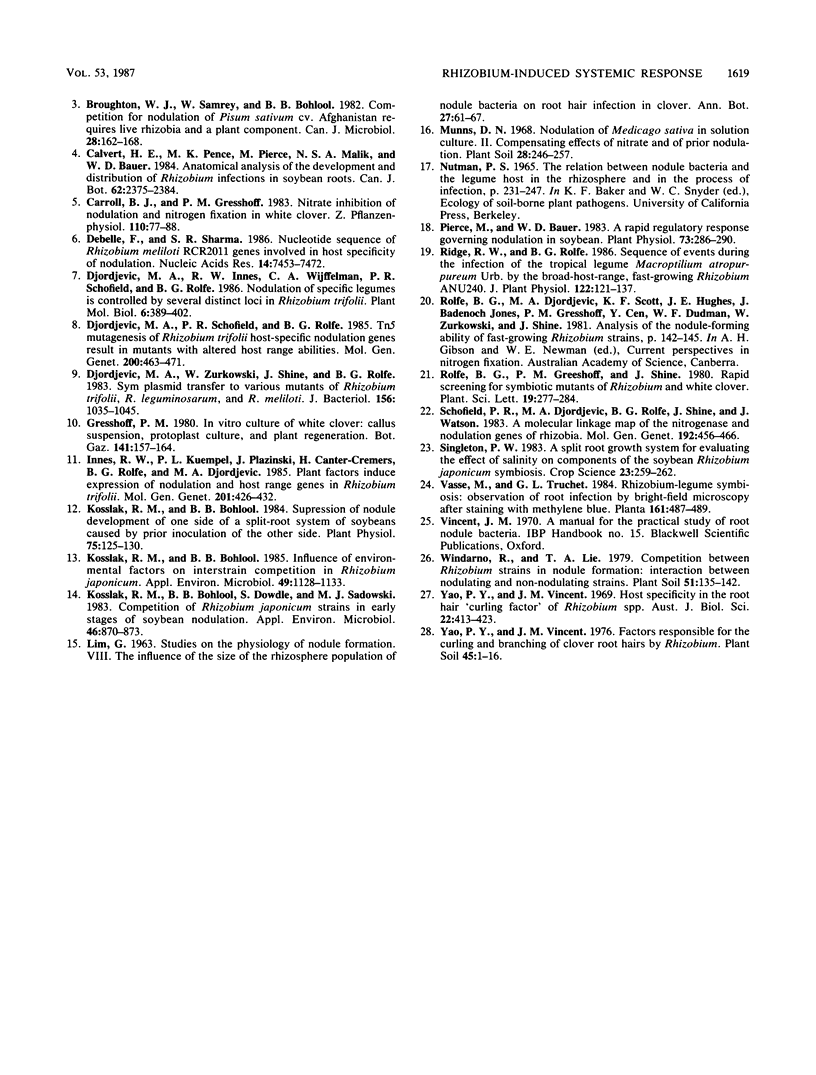
Images in this article
Selected References
These references are in PubMed. This may not be the complete list of references from this article.
- Bhuvaneswari T. V., Turgeon B. G., Bauer W. D. Early Events in the Infection of Soybean (Glycine max L. Merr) by Rhizobium japonicum: I. LOCALIZATION OF INFECTIBLE ROOT CELLS. Plant Physiol. 1980 Dec;66(6):1027–1031. doi: 10.1104/pp.66.6.1027. [DOI] [PMC free article] [PubMed] [Google Scholar]
- Debellé F., Sharma S. B. Nucleotide sequence of Rhizobium meliloti RCR2011 genes involved in host specificity of nodulation. Nucleic Acids Res. 1986 Sep 25;14(18):7453–7472. doi: 10.1093/nar/14.18.7453. [DOI] [PMC free article] [PubMed] [Google Scholar]
- Djordjevic M. A., Zurkowski W., Shine J., Rolfe B. G. Sym plasmid transfer to various symbiotic mutants of Rhizobium trifolii, R. leguminosarum, and R. meliloti. J Bacteriol. 1983 Dec;156(3):1035–1045. doi: 10.1128/jb.156.3.1035-1045.1983. [DOI] [PMC free article] [PubMed] [Google Scholar]
- Kosslak R. M., Bohlool B. B., Dowdle S., Sadowsky M. J. Competition of Rhizobium japonicum Strains in Early Stages of Soybean Nodulation. Appl Environ Microbiol. 1983 Oct;46(4):870–873. doi: 10.1128/aem.46.4.870-873.1983. [DOI] [PMC free article] [PubMed] [Google Scholar]
- Kosslak R. M., Bohlool B. B. Influence of Environmental Factors on Interstrain Competition in Rhizobium japonicum. Appl Environ Microbiol. 1985 May;49(5):1128–1133. doi: 10.1128/aem.49.5.1128-1133.1985. [DOI] [PMC free article] [PubMed] [Google Scholar]
- Kosslak R. M., Bohlool B. B. Suppression of nodule development of one side of a split-root system of soybeans caused by prior inoculation of the other side. Plant Physiol. 1984 May;75(1):125–130. doi: 10.1104/pp.75.1.125. [DOI] [PMC free article] [PubMed] [Google Scholar]
- Pierce M., Bauer W. D. A rapid regulatory response governing nodulation in soybean. Plant Physiol. 1983 Oct;73(2):286–290. doi: 10.1104/pp.73.2.286. [DOI] [PMC free article] [PubMed] [Google Scholar]



